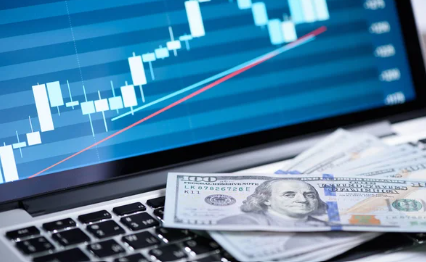

Summary
- The US dollar (USD) has continued its relentless climb as Q4 begins, poised to rise for a 12th straight week.
- Despite this, signs are emerging that the USD rally is losing steam.
- This is becoming increasingly evident in the two most heavily traded pairs: EUR/USD and USD/JPY.
This article is only available to Macro Hive subscribers. Sign-up to receive world-class macro analysis with a daily curated newsletter, podcast, original content from award-winning researchers, cross market strategy, equity insights, trade ideas, crypto flow frameworks, academic paper summaries, explanation and analysis of market-moving events, community investor chat room, and more.
Summary
- The US dollar (USD) has continued its relentless climb as Q4 begins, poised to rise for a 12th straight week.
- Despite this, signs are emerging that the USD rally is losing steam.
- This is becoming increasingly evident in the two most heavily traded pairs: EUR/USD and USD/JPY.
Market Implications
- EUR/USD has made a new year-to-date (YTD) low this week but has now stalled, trading just above 1.05. The longer EUR/USD remains near 1.05 without a convincing downside follow-through, the more likely the dollar is to reverse and EUR/USD trade higher.
- This week’s price action has strengthened our neutral view on USD/JPY. The pair firmly held the psychological 150 level, pulling back sharply on talk of Japanese official intervention. We are wary of further intervention risks and think that the longer USD/JPY goes without emphatically breaking above 150, the more likely the pair is to trade lower.
Introduction
The past week has seen the USD continue its seemingly interminable rise, with the USD Index (DXY) rising ~0.4% this week and poised for a 12th straight week of gains.
Despite this impressive performance since mid-July, price action in recent days in both EUR/USD and USD/JPY has revealed slowing momentum in the USD rally.
Specifically, the USD’s rally has paused in both pairs at interesting levels.
For EUR/USD, the 1.05 level had proven a durable support throughout 2023. This week, the pair traded at a new intraday YTD low of 1.0448 but then bounced back above 1.05.
This pause may yet prove only a temporary respite for EUR/USD. However, the longer the pair lingers above the YTD low without any follow-through, the more likely we see a more meaningful bounce towards 1.10.
For USD/JPY, the pair briefly traded above 150 on Tuesday, before sliding almost 2% within minutes.
This inevitably ratcheted up speculation that the Japanese Ministry of Finance (MoF) had directly intervened in the FX market to support the yen.
Whether this is true or not (it is possible, although the MoF refused to comment), price action since then has been telling.
USD/JPY now trades at ~148.5, with the pair lower by ~0.5% this week versus the yen. As with EUR/USD and the 1.05 level, the longer USD/JPY trades below 150, the more likely the USD is to decline.
Why Is the USD Rallying?
There are a few fundamental, intuitive reasons for the USD rally, which is about to enter its third month.
Interest Rate Differentials
Across the G10, and across most maturities of the respective interest rate curves, US yields are higher than those of their developed market counterparts.
This has been true for most of the tightening cycle (with the US being a relatively early rate hike adopter) and especially in this current leg of the USD rally.
These higher yields are proving attractive to global investors, especially as US economic data remains relatively buoyant.
Relative Economic Optimism
This better US data underscores the relatively strong position of the American economy vis-à-vis its G10 counterparts.
Recent PMI readings exemplify this. European and UK composite PMIs all linger near multi-year lows, with readings below 50 and stagflation part of the narrative in these economies in recent months.
In the US, the most recent composite PMI printed above 50 for the eighth straight month, with talk of stagflation yet to take hold as part of the US macroeconomic narrative.
Higher yields, backed by a stronger economy, have helped underpin USD strength.
Higher Oil Prices Have Been USD-Positive
Over the 12 weeks of the USD rally, oil prices have also risen.
This is no coincidence. As my Macro Hive colleague Bilal Hafeez recently argued, the US terms of trade has moved in line with energy prices, so the rally in oil has supported the USD.
Additionally, with the US a net energy exporter, and Europe and Japan net energy importers, the rising oil price has boosted the USD.
Pay Attention to EUR/USD and USD/JPY Price Action
The dollar rally’s pause this week is evident in the two most heavily traded currency pairs: EUR/USD and USD/JPY.
EUR/USD
Since the current dollar rally began during the week of 21 July, EUR/USD is down ~6.25%.
With the fundamental drivers of USD strength outlined above still broadly in place, our base case is that the EUR/USD selloff probably still has room to run before bottoming out. After all, the pair is poised to close lower for a 12th straight week.
Nonetheless, we consider the pair stalling after printing a marginal new YTD low this week a nascent sign that the USD rally versus the EUR may be running out of steam.
Price action in the coming week will be important. We have the closely watched US jobs numbers released tomorrow.
Should EUR/USD not be able to print a new YTD low by the end of the week, we think it increases the probability that the pair may rally back to 1.10 in the coming weeks. Conversely, if the pair makes a marginal new YTD low, then it probably has legs to run closer to parity.
USD/JPY
The Japanese yen is by far the weakest G10 currency in 2023, down almost 12% versus the US dollar so far this year and falling against all its G10 counterparts.
The pair very briefly traded above 150 on Tuesday, for the first time since October last year, before plummeting ~2% within minutes.
This, of course, prompted speculation that the Japanese MoF directly intervened in the market to buy yen versus the dollar.
Although the MoF has not commented on the speculation, USD/JPY has not traded back above ~149.35 since the sharp drop on Tuesday.
Notably, when the MoF most recently intervened in the currency markets in October last year, USD/JPY fell from a peak just below 152 to 136 in a span of about six weeks.
While that is no guarantee we will see a similar reaction should the MoF intervene again, it increases the chances of another meaningful pullback in USD/JPY.
We suspect that the market may yet test the mettle of Japanese policymakers and trade back to 150 in the near term. The longer the pair does not convincingly trade above the level, though, the more likely it is that USD/JPY declines further.
